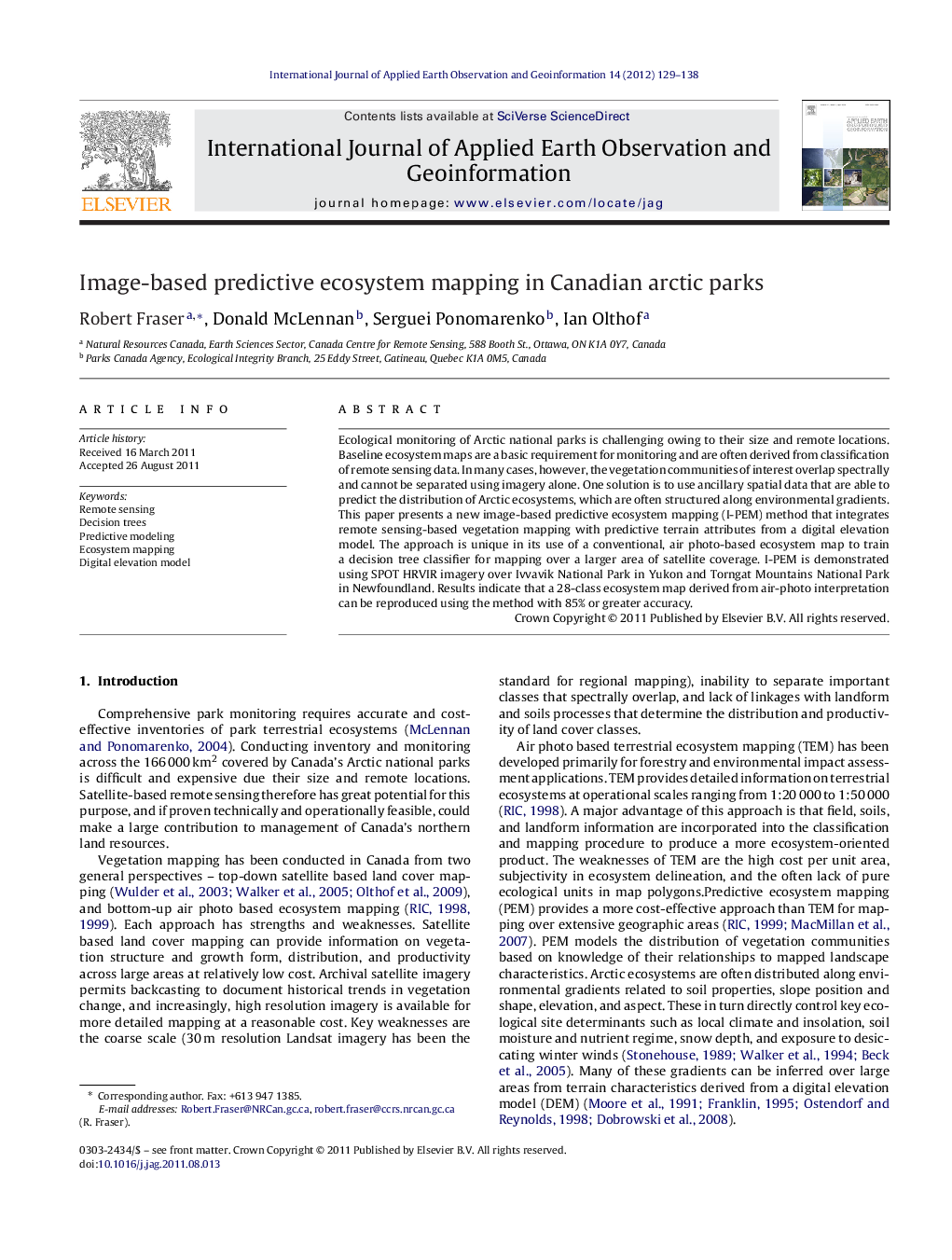| Article ID | Journal | Published Year | Pages | File Type |
|---|---|---|---|---|
| 4465041 | International Journal of Applied Earth Observation and Geoinformation | 2012 | 10 Pages |
Ecological monitoring of Arctic national parks is challenging owing to their size and remote locations. Baseline ecosystem maps are a basic requirement for monitoring and are often derived from classification of remote sensing data. In many cases, however, the vegetation communities of interest overlap spectrally and cannot be separated using imagery alone. One solution is to use ancillary spatial data that are able to predict the distribution of Arctic ecosystems, which are often structured along environmental gradients. This paper presents a new image-based predictive ecosystem mapping (I-PEM) method that integrates remote sensing-based vegetation mapping with predictive terrain attributes from a digital elevation model. The approach is unique in its use of a conventional, air photo-based ecosystem map to train a decision tree classifier for mapping over a larger area of satellite coverage. I-PEM is demonstrated using SPOT HRVIR imagery over Ivvavik National Park in Yukon and Torngat Mountains National Park in Newfoundland. Results indicate that a 28-class ecosystem map derived from air-photo interpretation can be reproduced using the method with 85% or greater accuracy.
► Optical satellite imagery combined with terrain attributes to map Arctic ecosystems. ► Existing air-photo based ecosystem map used to train a decision tree classifier. ► Ecosystem map with 28 classes reproduced with 85% or greater accuracy.
